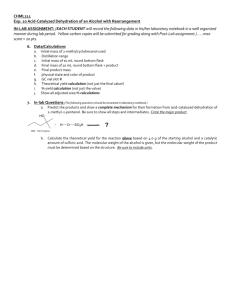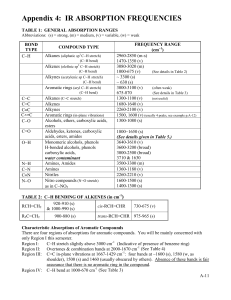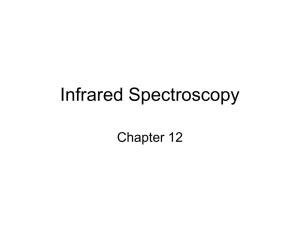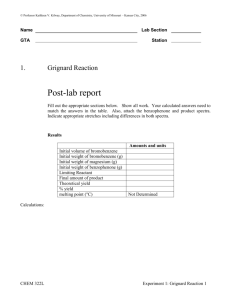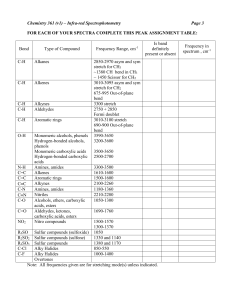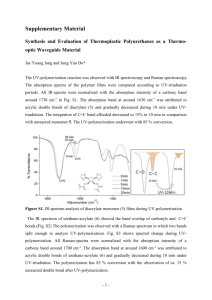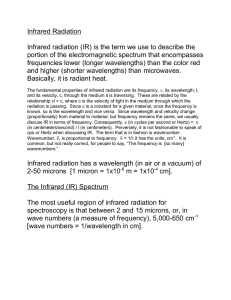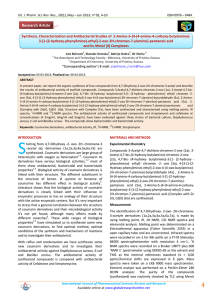INTERPRETATION OF INFRARED SPECTRA Hydrocarbons
advertisement
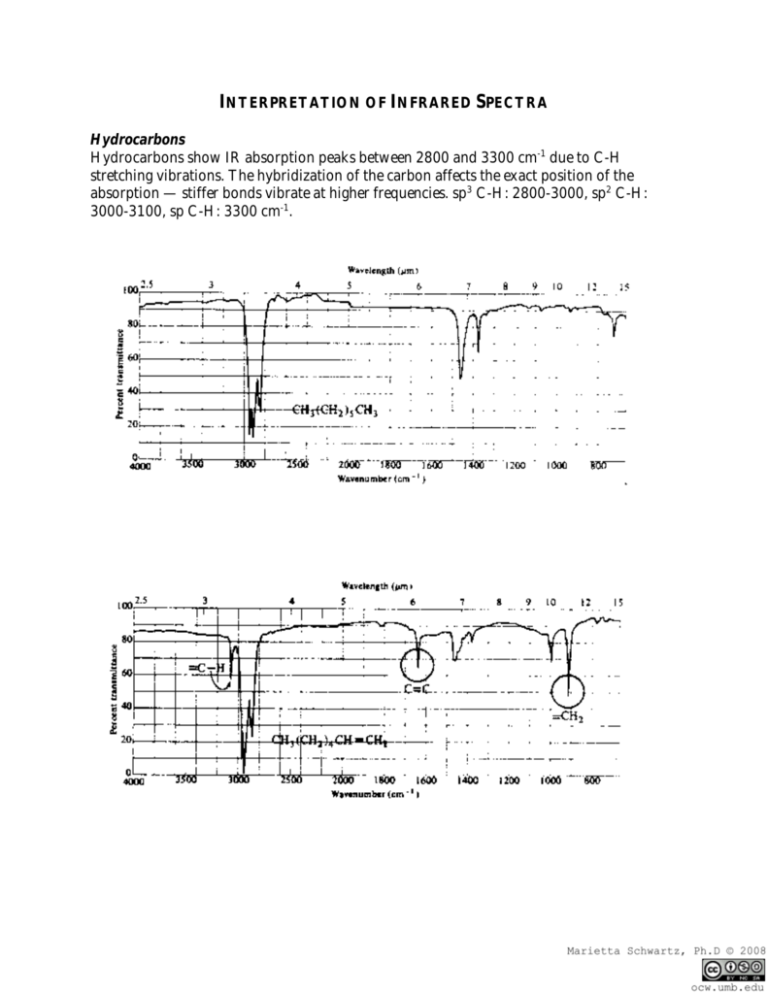
INTERPRETATION OF INFRARED SPECTRA Hydrocarbons Hydrocarbons show IR absorption peaks between 2800 and 3300 cm-1 due to C-H stretching vibrations. The hybridization of the carbon affects the exact position of the absorption — stiffer bonds vibrate at higher frequencies. sp3 C-H: 2800-3000, sp2 C-H: 3000-3100, sp C-H: 3300 cm-1. Aromatic Compounds The position of substitution on a benzene ring can sometimes be determined from the IR spectrum. Benzene rings often give characteristic absorptions at about 680-900 cm-1. The patterns observed are summarized in the following table: a Substitution Pattern Appearance Position of Absorption (cm-1) monosubstituted two peaks 730-770 690-710 o-disubstituted (1,2) one peaka 735-770 m-disubstituted (1,3) three peaks 860-900 750-810 680-725 p-disubstituted (1,4) one peak 800-860 An additional peak is often observed at approximately 680 cm-1. Nitriles and Alkynes The CN triple bond absorption appears at 2200-2300 cm-1, in about the same place as the CC triple bond absorption. Both of these bands are usually medium to weak in intensity. Alcohols and Amines Alcohols and amines show a conspicuous OH or NH stretching absorption at 3000-3700 cm-1 (to the left of the hydrocarbon CH stretch). If there are two hydrogens on the amine, a double peak is seen. If the compound is a tertiary amine, no NH stretch is observed. The OH absorptions are generally quite intense and smoothly curved. NH stretches are weaker and narrower. Ethers Ethers have a C-O stretch that appears in the fingerprint region at 1050-1260 cm-1. This is generally a strong absorption, but can be difficult to detect if the fingerprint region is complex. Alcohols, esters, and other compounds containing C-O single bonds also show a C-O stretch in this region. Carbonyl Compounds The carbonyl (C=O) stretch is one of the most distinctive bands in the IR spectrum. It can be found at 1640-1820 cm-1 and is generally a very strong peak. Functional Group Position of Absorption (cm-1) Aldehyde (RCHO) 1720-1740 Ketone (RCOR’) 1705-1750 Carboxylic Acid (RCO2H) 1700-1725 (also note broad OH stretch) Ester (RCO2R’) 1735-1750 (also note C-O stretch) It should be pointed out that the C=O absorption ranges for the various carbonylcontaining functional groups overlap significantly, so it is difficult to make a definitive identification of the functional group based solely on the position of the carbonyl peak. However, most of these functional groups show other diagnostic absorptions that assist in identification. These are summarized below, and illustrated on the following pages. Aldehydes: will also show a distinctive C-H stretch around 2800 cm-1. Ketones: will not show any of the other distinctive absorptions mentioned here. Carboxylic Acids: will also show a very broad OH stretch that frequently obscures the CH stretch around 3000 cm-1. Esters: will also show a strong C-O single bond stretch as discussed earlier. Ketones — have the simplest spectra of the carbonyl compounds, with the C=O stretch and the C-H stretch being the major absorptions (unless other functionality is present). Aldehydes — the important difference between aldehydes and ketones is the aldehydic CH stretch. This absorption usually appears to the right of the sp3 CH stretch, at 2700-2900 cm-1. Carboxylic Acids — have a very distinctive OH band which usually starts around 3300 cm1 and stretches into the aliphatic CH region, often partially or completely obscuring the CH str etc h. Esters — have both a C=O and a C-O stretch.

